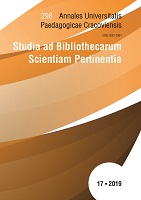Wykorzystanie wskaźników mglistości tekstu i gęstości informacyjnej w ocenie użyteczności podręczników szkolnych
Use of text fogging and information density indicators in assessing the usefulness of school textbooks
Author(s): Barbara Kamińska-Czubała, Beata LangerSubject(s): Information Architecture, Theory of Literature, Sociology of Education
Published by: Wydawnictwo Uniwersytetu Komisji Edukacji Narodowej w Krakowie
Keywords: text vagueness indicators; information density indicators; textbooks;
Summary/Abstract: The analysis of randomly selected samples for text readability using Robert Gunning's formula and expert calculation of the results indicates that only 16.6% (3 samples) fall within the text understandability range. The analyzed samples that are not at the comprehensibility level come from textbooks for various subjects for grades IV, V, and VI. Therefore, it is difficult to talk about any convergence of the vagueness index within education for a specific age of students. Samples from a history textbook for grade 4 are characterized by a high index of both F and G. This means that the textbook is written in too difficult a language and the availability of information is the least (high index D). Isn't this practice discouraging for 10-11 year old students? 27.7% of text samples are at the limit of intelligibility of the read text (FOG 10.16-10.96).
Journal: Annales Universitatis Cracoviensis. Studia ad Bibliothecarum Scientiam Pertinentia
- Issue Year: 2019
- Issue No: 17
- Page Range: 403-416
- Page Count: 14
- Language: Polish

